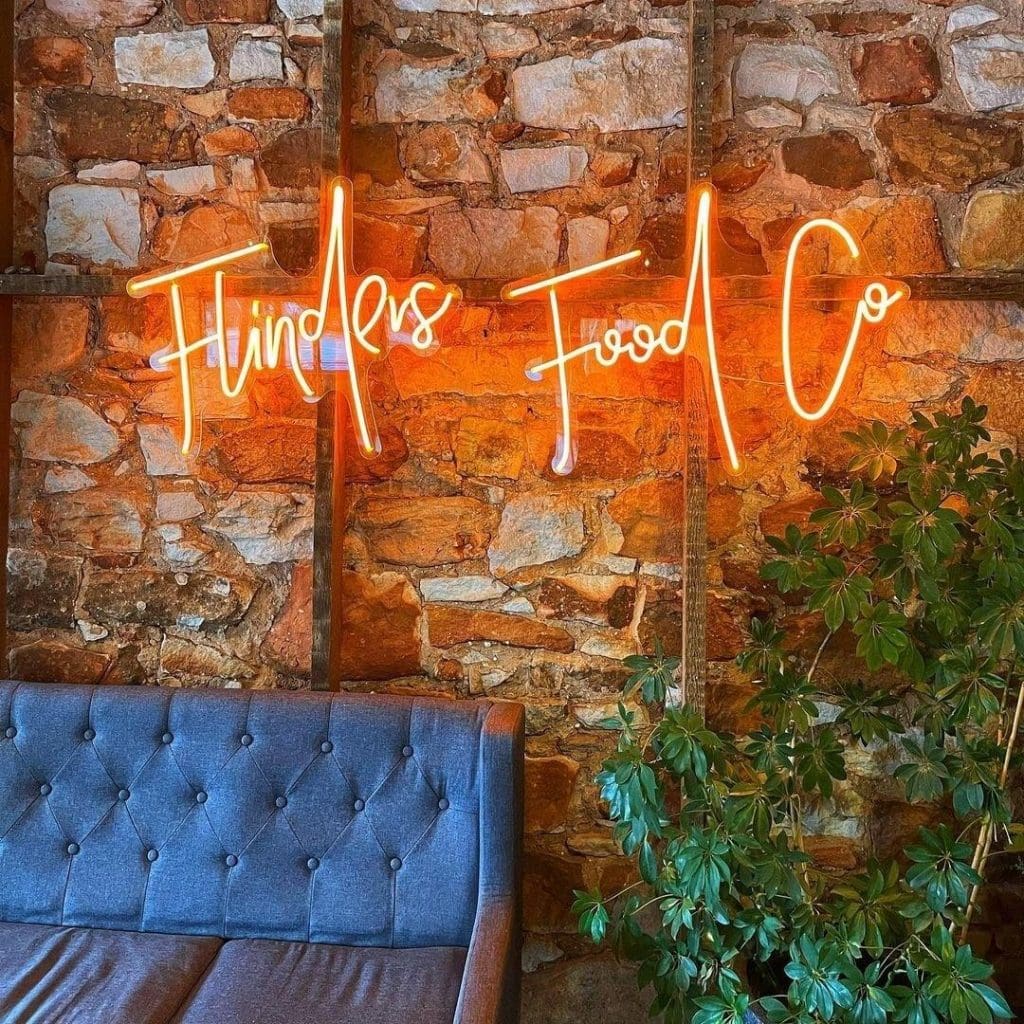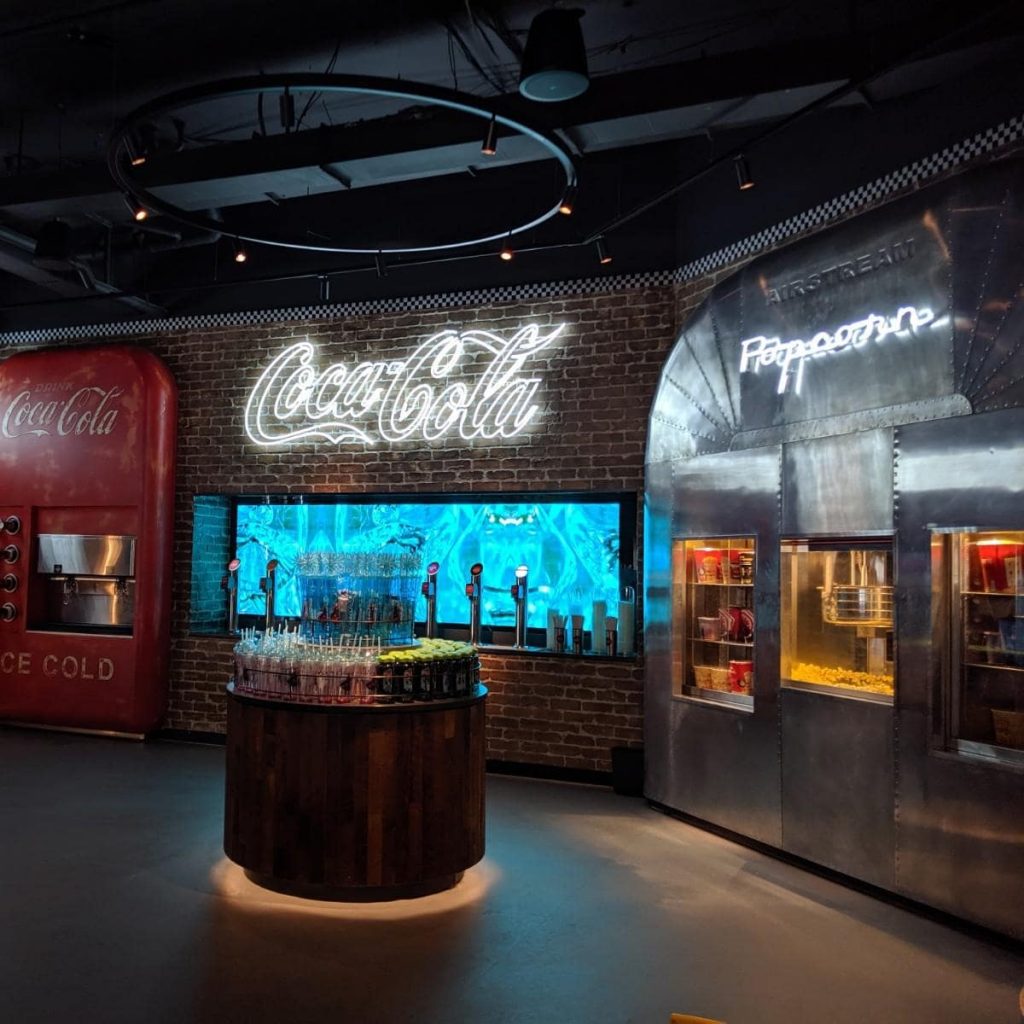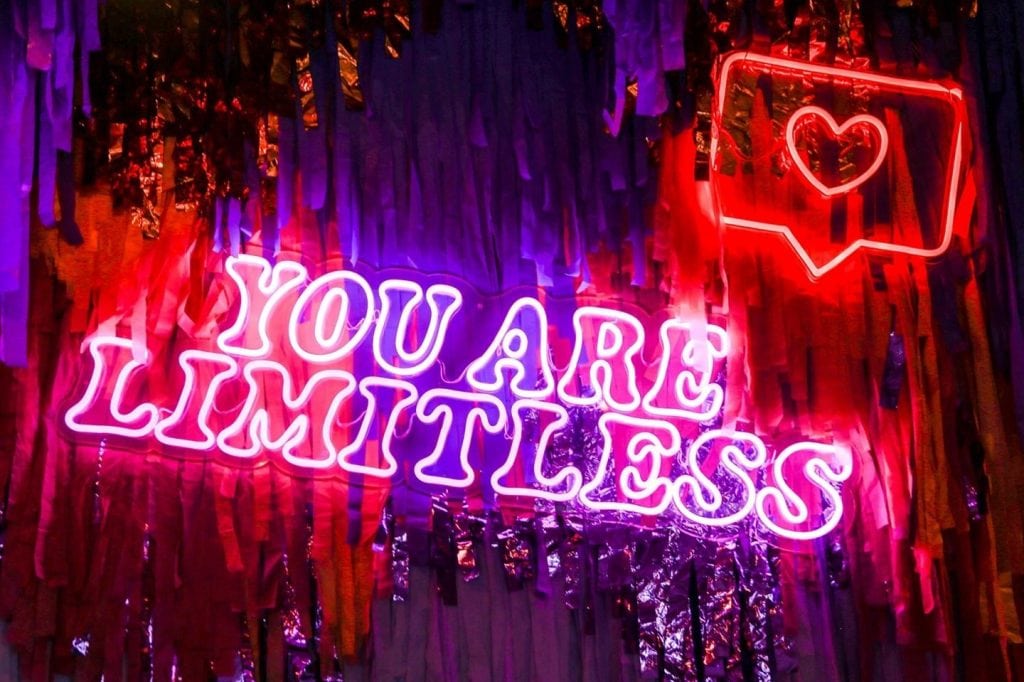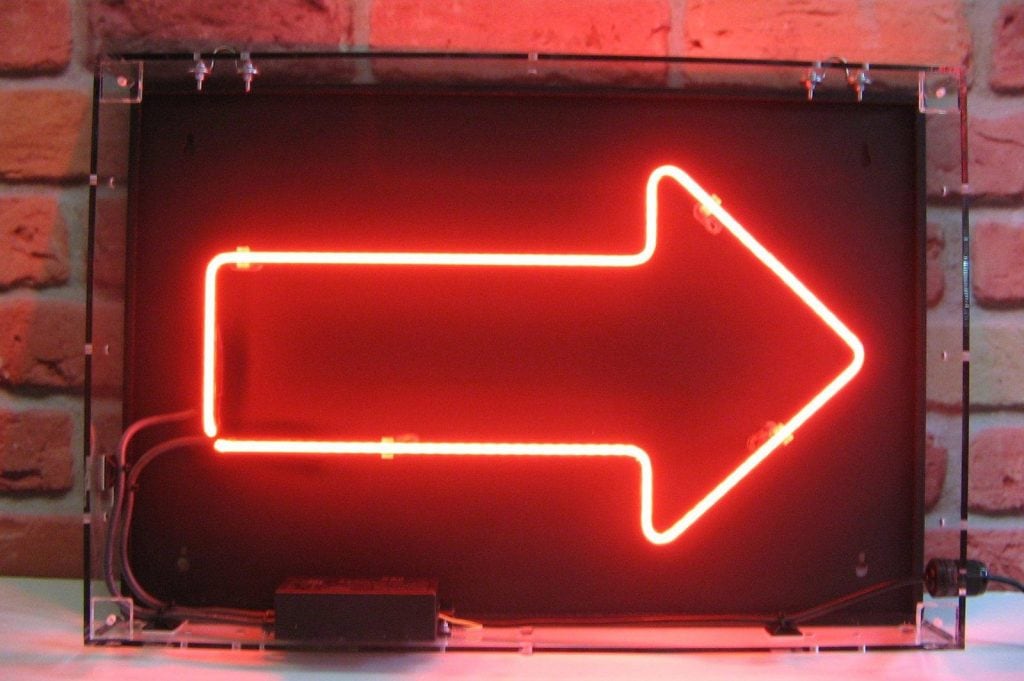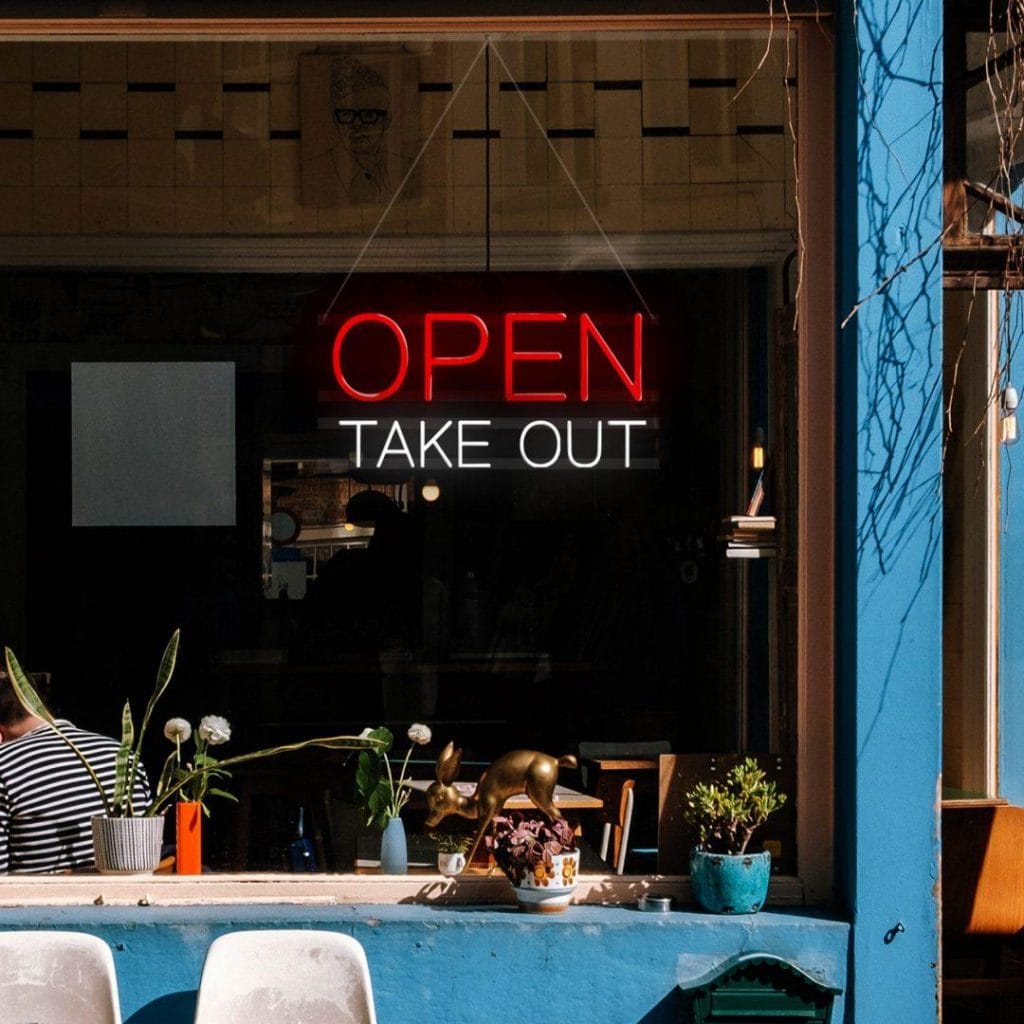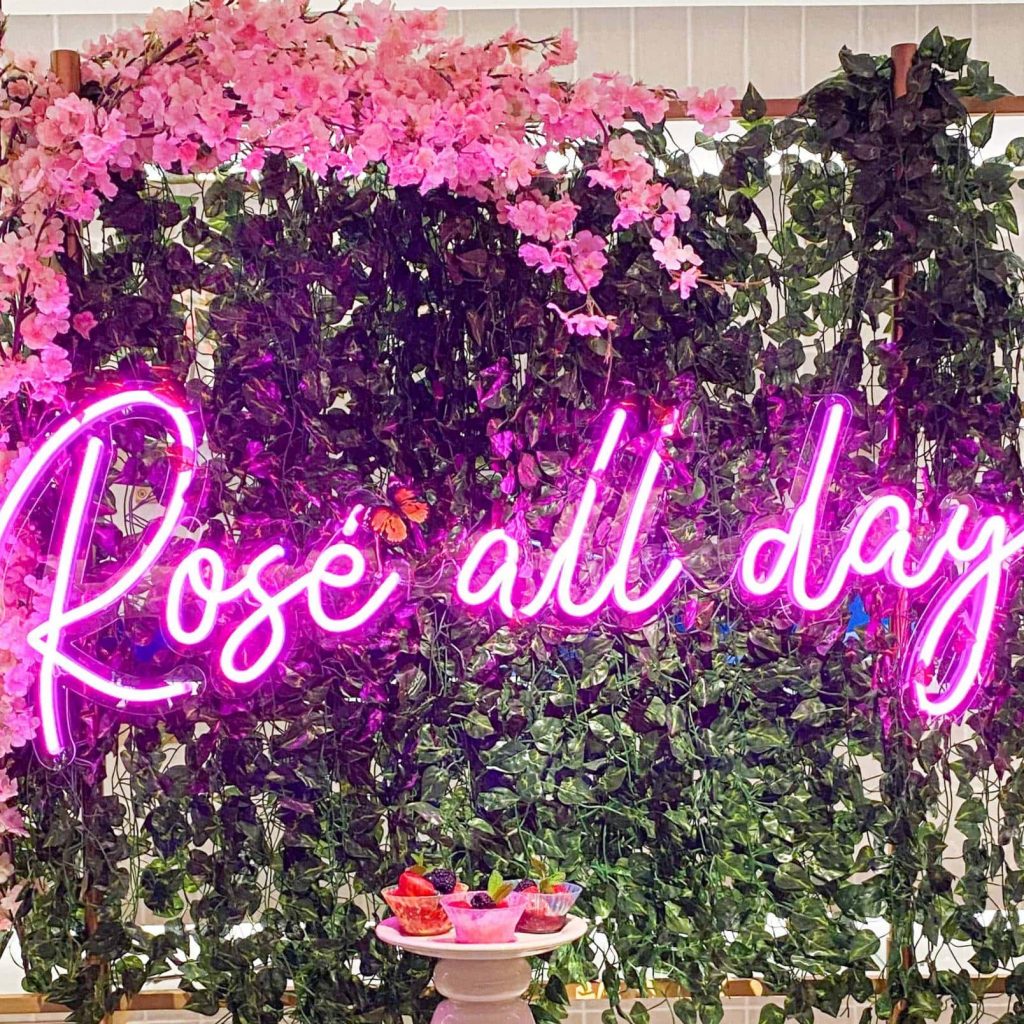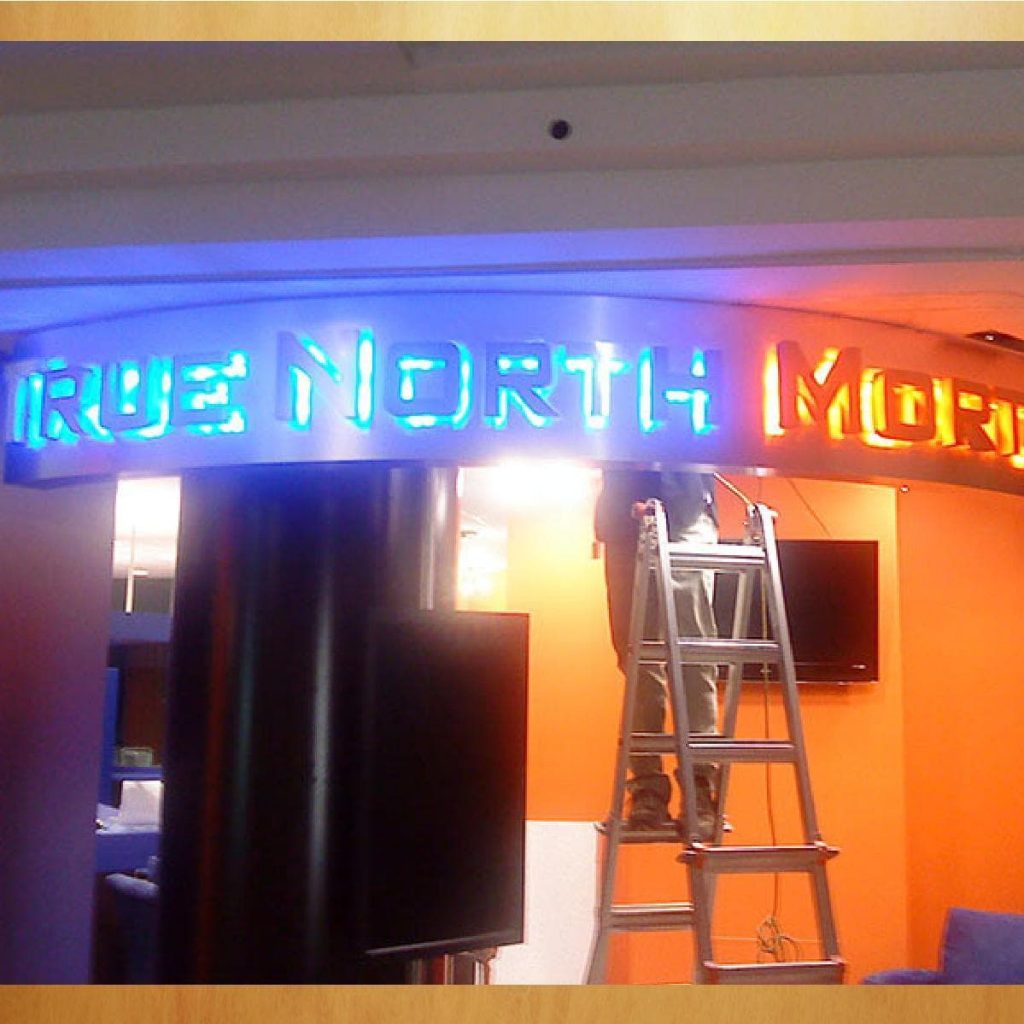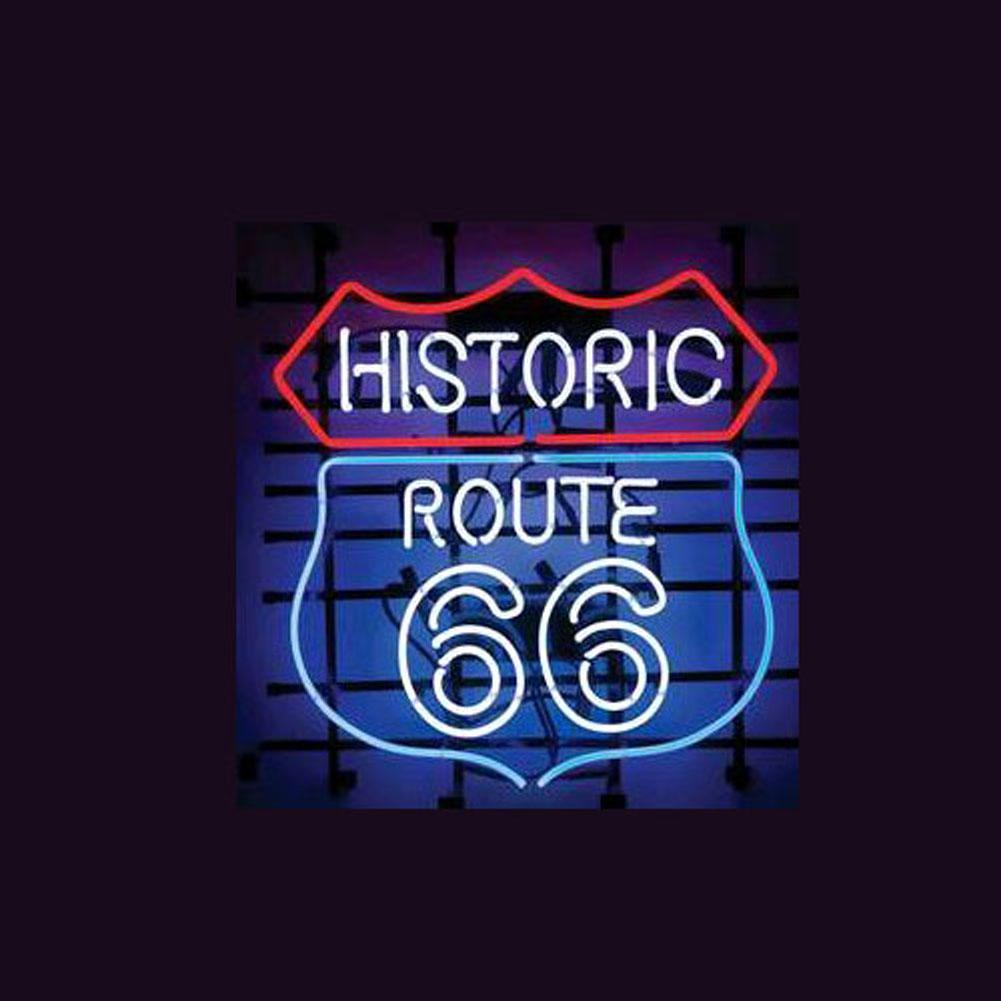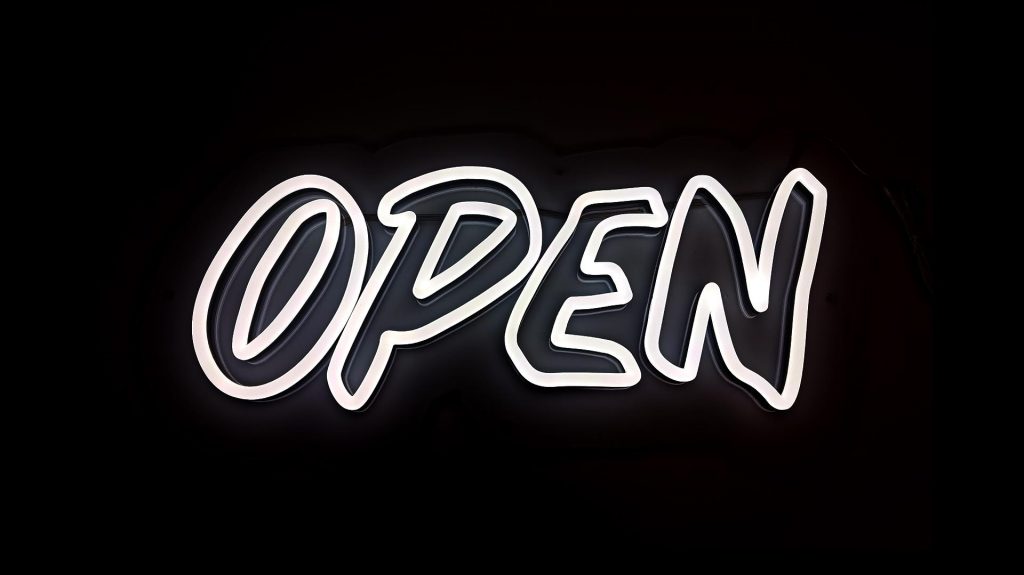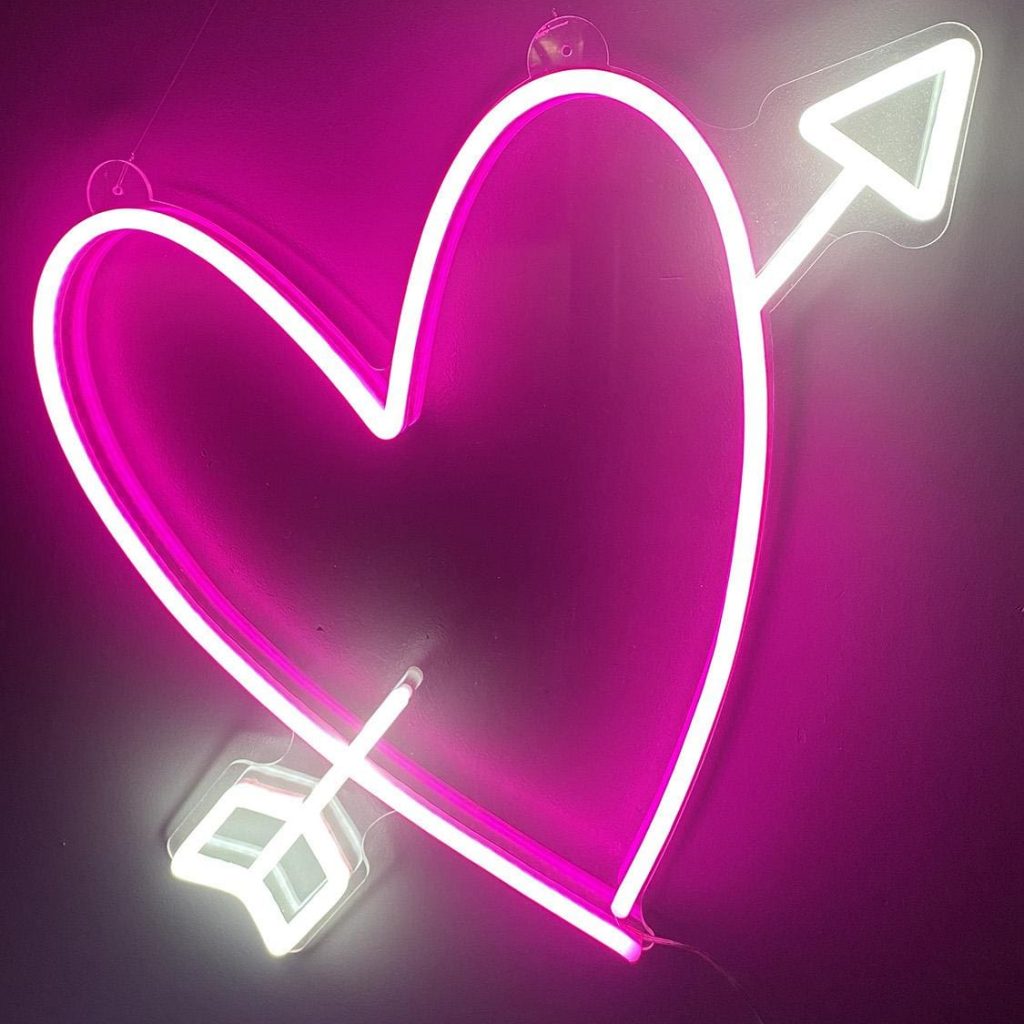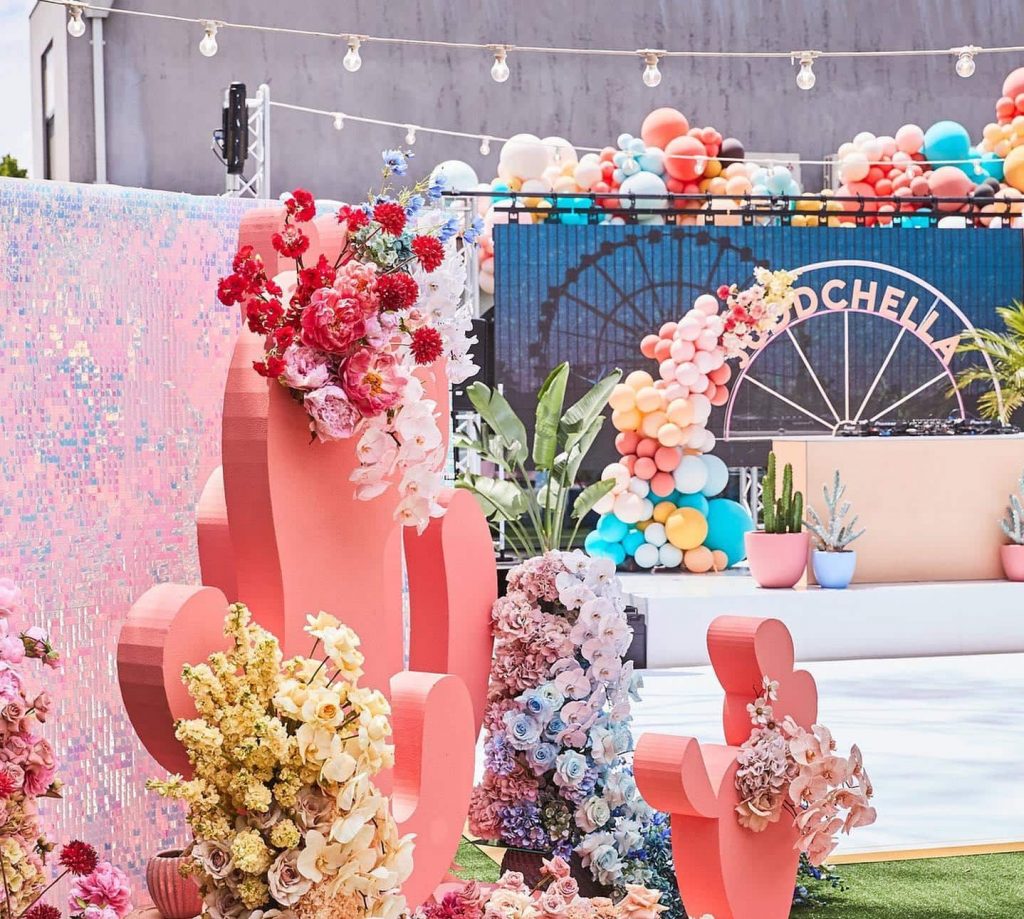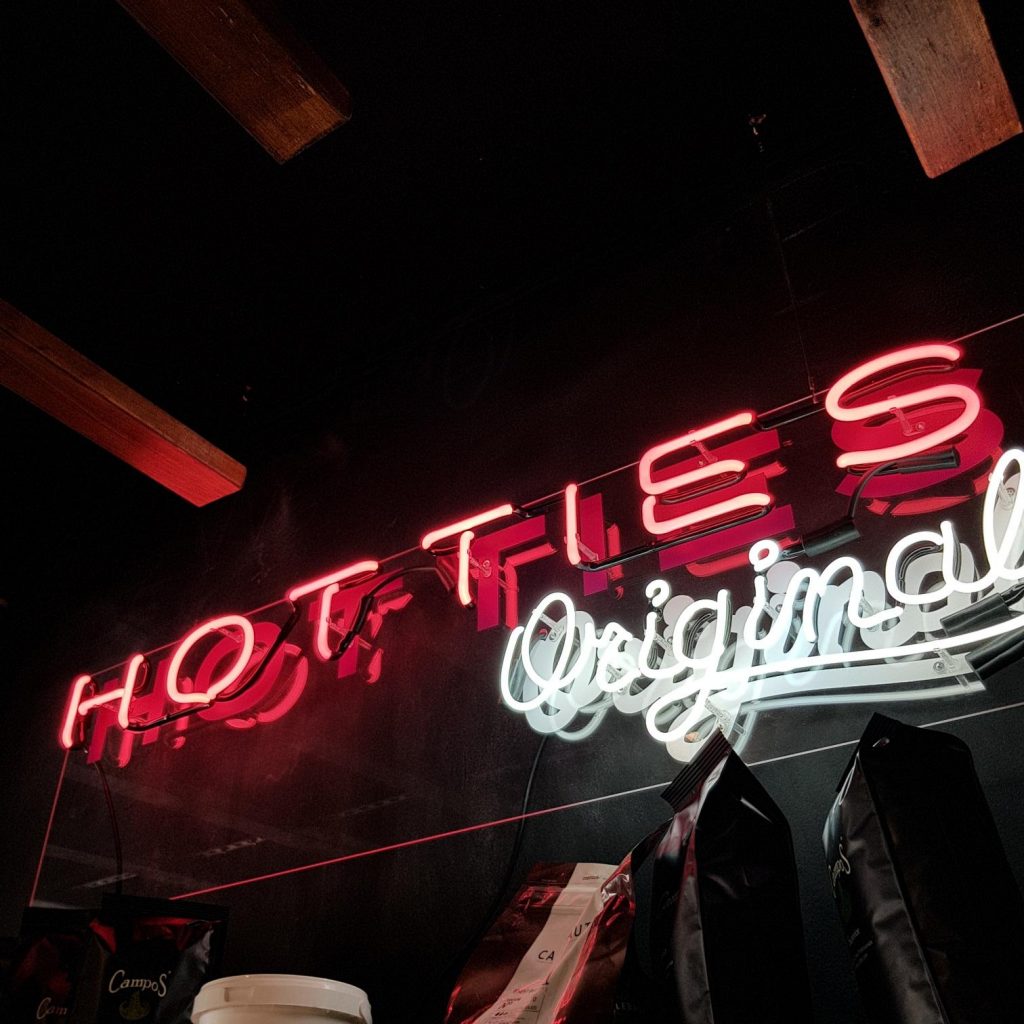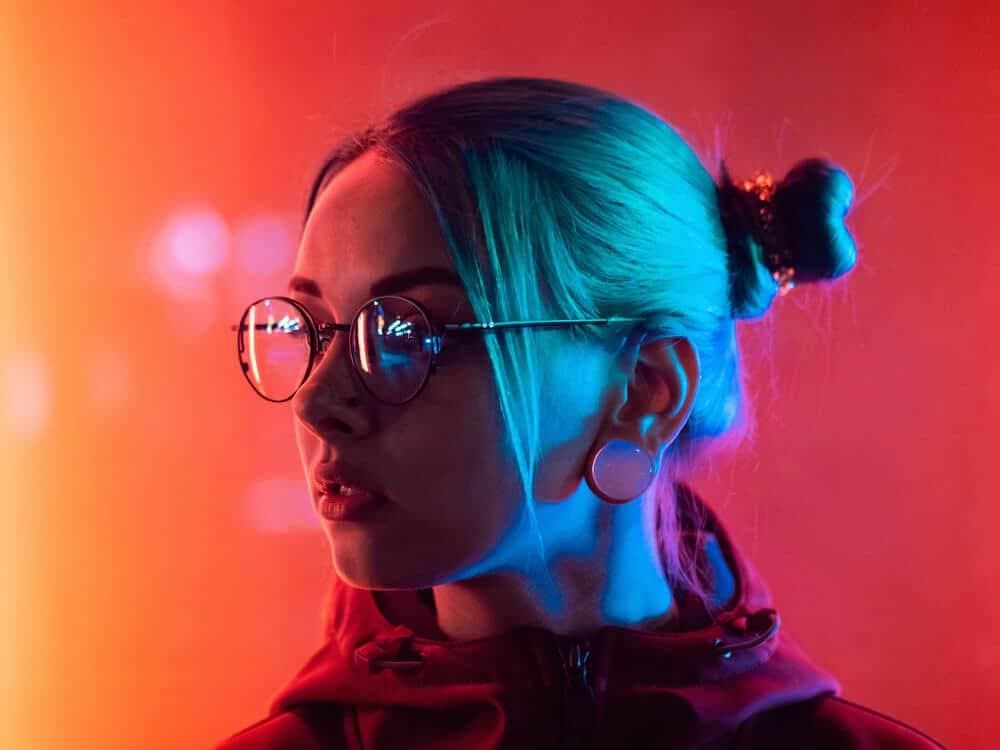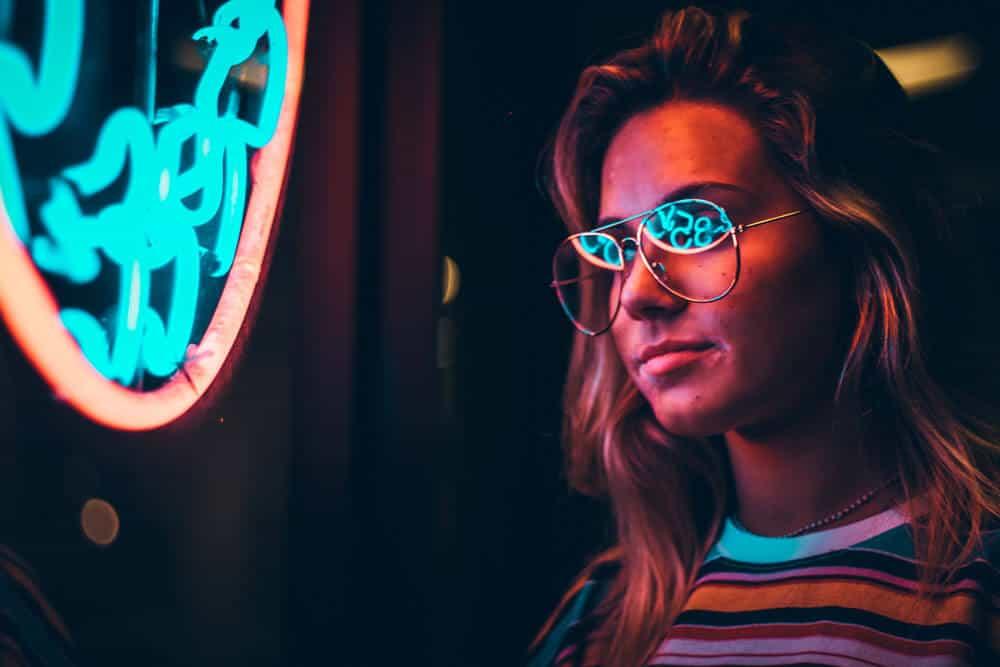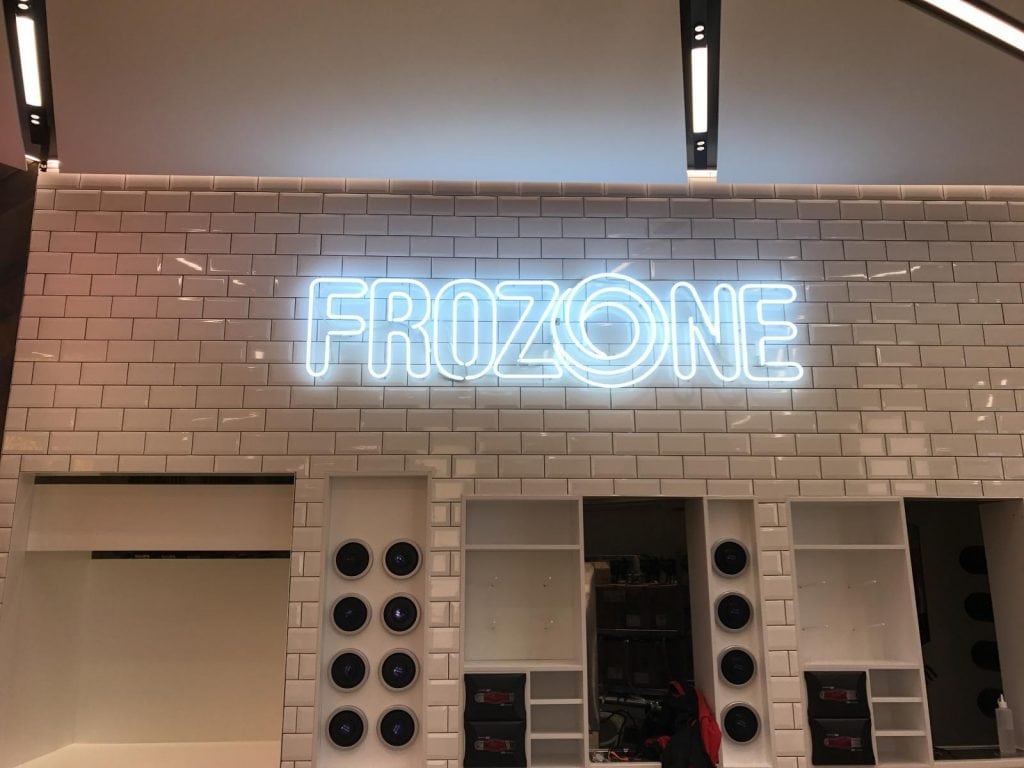Neon signs have been used for marketing and decoration for well over a century, and their vivid hues and attention-grabbing patterns continue to captivate people everywhere.
Many well-known custom neon sign designs have emerged over the years, attesting to the adaptability and originality of this fascinating art form.
These custom neon signs, bearing everything from instantly recognisable logos to catchy slogans, have outlived their initial function to become cultural touchstones for their respective brands and messages.
In this blog, we will examine the background and cultural impact of several well-known custom neon sign designs. All lovers of neon art will find something to their liking in this collection, from classic signs to cutting-edge creations.
The History of Custom Neon Sign
Creating unique neon displays has a long and storied history that can be traced back to the early 20th century. Businesses quickly saw the advertising potential of neon, a noble gas discovered in 1898 and commercially available beginning in the 1910s.
The first neon sign was made by French engineer Georges Claude in 1910 and placed in a barbershop in Paris. The neon "BARBIER" sign was an instant hit, and the lighting style quickly gained popularity among establishments all over the world.
Designing neon signs was elevated to the level of fine art in the 1920s and 1930s. Intricately designed, multicoloured, and font-heavy custom neon signs soon became a ubiquitous part of cityscapes everywhere.
Movie theatres, casinos, and nightclubs all used neon signs to entice customers during this time period because of their association with glitz and excitement.
In the decades following World War II, neon signs kept gaining in popularity, and by the 1950s, they had evolved into increasingly intricate works of art. Neon soon became a symbol of progress and modernity, and businesses began creating unique neon signs to set themselves apart.
However, neon signs' popularity began to decline in the 1960s and 1970s as businesses shifted their focus to other, more cost-effective kinds of advertising. Many neon signs were in disrepair by the 1980s, having been replaced with LED or other technologies.
However, personalised neon sign design has survived this decrease. Artists and businesses alike have been turning to neon to produce one-of-a-kind and eye-catching designs in recent years.
Many contemporary neon sign artists have embraced new methods of production, such as the use of digital design software and LED lighting to make more eco-friendly versions of the traditional signs.
The art of creating unique neon signs is still widely used in the world of marketing and interior design today.
The history and legacy of these works, which range from vintage neon signs to cutting-edge designs, speak to the everlasting allure of this distinct art form.
How Custom Neon Signs Are Made?
Creating a unique neon sign is an art form that calls for technical skill, precision, and attention to detail.
Here's a basic rundown of how a custom neon sign is manufactured, though the actual steps may change based on the design and materials chosen.
Design
Making a design is the first stage in making a neon sign. Whether done manually or with computer-aided design software, this step involves determining the sign's text, font, and any additional graphic components or shapes.
Pattern and Layout
After the plan is complete, a pattern is made that specifies where and how the neon tubing will be installed. Next, the neon tubing is laid out by bending and shaping it to fit the pattern, which is done at a work table after the pattern has been transferred there.
Glassblowing
Glass is blown and formed with a gas torch to create the neon tubing. Using specialised equipment, the glass is heated until it is pliable, at which point it can be moulded into the desired curves and angles.
Electrodes and Wiring
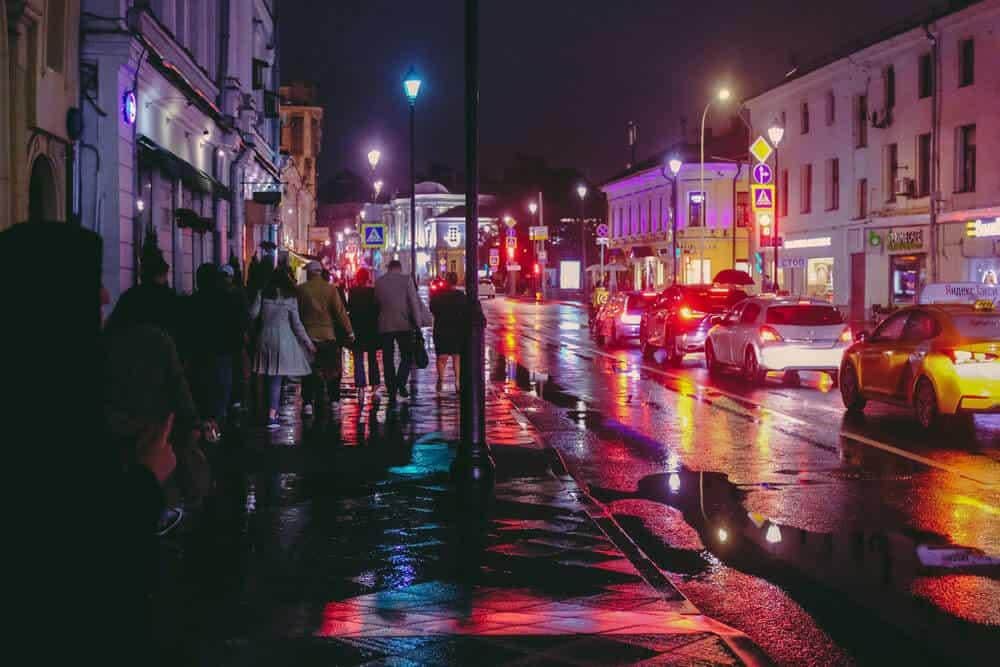
Next, the ends of the neon tubing are fitted with electrodes and linked to the sign's electrical system. Metal electrodes are commonly used, and a gas torch is used to seal them onto the tube ends.
Vacuum Pump
A vacuum pump is used to remove air from the tube before the neon gas is introduced. Cleansing the sign in this way eliminates the possibility of any contaminants affecting the sign's performance.
Gas Filling
After the tubing has been emptied of its air, neon gas is injected into it using a vacuum sealer. Small amounts of neon gas are injected, and the tubing is heated and cooled gradually to provide a steady flow.
Assembly and Mounting
After the gas is pumped through the neon tube, the sign may be finished being put together and installed. Connecting the cabling and transformers required to power the sign, as well as attaching the tubing to a backing material or frame, may be part of this process.
Testing and Quality Control
There is extensive testing and quality control done on the custom neon sign before it is sent or placed to guarantee that it is fully operational and up to code in terms of safety and quality.
It takes technical know-how, aesthetic sensibility, and meticulous attention to detail to make a unique neon sign.
A high-quality, long-lasting neon sign that is both distinctive and eye-catching requires careful attention to detail at every stage of the process, from conceptualisation through final assembly and testing.
What are some of the most well-known neon sign designs?
Since neon signs have been popular since the early 1900s and have taken on various forms and designs throughout the years, it's impossible to pick the most famous bespoke neon sign design in the history of mankind.
The "Welcome to Fabulous Las Vegas" sign, a landmark in the city since 1959, and the "Coca-Cola" sign, which has been used in innumerable advertising and has become synonymous with the brand, are two of the most recognisable neon signs in the world.
The "Moulin Rouge" sign in Paris, the "Apollo" sign in New York, and the "Ryman Auditorium" sign in Nashville are all examples of well-known neon signs. Custom neon signs may have a significant and long-lasting effect on society and culture, and each of these signs exemplifies this.
I ❤ NY
There have been numerous innovative and creative designs for custom neon signs in recent decades, but the "I ❤ NY" sign stands out as one of the most famous and widely recognised. Neon with the iconic heart symbol and the letters "NY" in bold, sans-serif typography; designed by Milton Glaser in 1977.
The "I ❤ NY" sign, which was initially designed as part of a tourism promotion campaign, has become a ubiquitous symbol of New York City, appearing on everything from t-shirts to souvenir mugs.
Its enduring appeal can be attributed in part to the design's flexibility, which allows it to be adapted to a wide range of situations. Many different iterations of the "I ❤ NY" sign, some using LED lights instead of the original red and white neon, have been made throughout the years.
Even more firmly establishing its reputation as a modern classic, the design has been altered to symbolise numerous cities and locales.
“Vibes”
Among the various bespoke neon sign designs that have become popular among members of Generation Z, the "Vibes" sign stands out as one of the most iconic and recognisable.
The word "Vibes" is usually shown in a large, cursive, or script font on this neon sign and is sometimes accompanied by a decorative element like a lightning bolt or stars. In private settings such as bedrooms, dorm rooms, and offices, the symbol is employed to set a lighthearted and carefree mood.
Because of its connection to young people and their need to express themselves, the "Vibes" sign has become very popular. The "Vibes" sign is an easy and cheap method to bring personality to a room, which is important to many members of Generation Z who appreciate individuality and innovation.
To create a warm and welcoming ambience, the sign is frequently paired with other home decor items like string lights, tapestries, and plants.
The "Vibes" sign has become a significant emblem of the design aesthetic and values of Generation Z, even if it may not have the same cultural significance as some of the iconic neon signs of prior eras. Proof positive of the evergreen allure of custom neon sign design as an expression of individuality and taste in decor.
“Happy Hour”
Custom neon signs are frequently used in nightclubs and bars because of their ability to attract attention and generate excitement.
The "cocktail glass" sign is one of the most classic and identifiable designs, while there are numerous more that can be utilised based on the establishment's style and branding.
Often in bold, eye-catching colours like pink, blue, or green, the cocktail glass sign shows a stylised picture of a martini or other traditional cocktail glass. The effectiveness of the sign can be boosted by the addition of details like a straw, olives, or any number of other ornaments.
The cocktail glass symbol's widespread acceptance can be explained by the celebratory nature of bar and club culture. To create a more unified and eye-catching visual display, the sign is typically combined with additional neon features like arrows, stars, or inscriptions like "Happy Hour" or "Cheers." It's an easy-to-modify layout that has the potential to work well for a wide range of businesses.
The cocktail glass sign has become a symbol of the exciting and dynamic nightlife environment, even though it lacks the historical value of some of the more famous neon signs from bygone eras. Custom neon sign design as a method of establishing ambience and individuality has stood the test of time, as evidenced by the trend's continued popularity.
“Open”
Retail stores and shopping centres frequently use custom neon signs to attract customers' attention and inject some character and identity into their storefronts. The "Open" sign is one of the most universally recognised storefront signs, while many other styles are possible based on the type of store and the intended clientele.
The word "Open" is usually shown in big, bold letters on the "Open" sign, a classic neon style.
To increase the sign's effectiveness and harmonise it with the store's overall identity, it may be complemented by supplementary features like an arrow, border, or logo.
Customers appreciate the simplicity and effectiveness of the "Open" sign, which lets them know right away that the establishment is now accepting customers.
In order to create a unified and eye-catching visual display, the sign is frequently combined with other neon elements such as "Sale," "Clearance," or "New Arrivals."
It's an easy-to-modify layout that works well for a wide range of retail establishments and logo designs.
The "Open" sign has become a symbol of the retail business and the significance of good signage, even if it lacks the historical significance of some of the more famous neon signs from bygone times. Custom neon sign design has been used for decades to establish a company's identity and attract new clients, and this trend shows no signs of slowing down.
“Gamer”
The addition of a custom neon sign to a gamer's or streamer's setup is a common way to give their setup a more recognisable identity and establish the mood for their viewers. The "Gamer" symbol is one of the most iconic and recognisable designs, while there are many others to choose from depending on personal style and the sort of material being created.
The word "Gamer" is usually shown in large, stylised characters on the "Gamer" sign, and is sometimes accompanied by other images linked to gaming, such as game controllers, headphones, and in-game graphics. An arrow or border may be added to the sign to emphasise its message and complement the streamer's visual identity.
The "Gamer" symbol's widespread acceptance may be traced back to the message it conveys: the content creator is, themselves, an avid gamer. This, in turn, fosters a sense of camaraderie and common ground among the material's audience.
When utilised in a larger visual presentation, the sign is commonly paired with other neon elements such as "Live Now," "Subscribe," or "Follow" to draw the viewer's eye. It's a basic yet functional layout that can be adjusted to accommodate varied play and broadcasting preferences.
In spite of the fact that the "Gamer" neon sign hasn't yet achieved the same level of cultural icon status as other, more classic neon signs, it has become a potent emblem of the gaming and streaming communities and the value of self-promotion. Its success proves that custom neon sign design is a popular method of developing a memorable company identification, even in the modern era.
Conclusion
People have been captivated by the bright colours and eye-catching patterns of neon signs, which have been used for advertising and decoration for over a century. Over the years, many iconic custom neon sign designs have emerged, attesting to the versatility and creativity of this fascinating art form. In the 1920s and 1930s, neon signs became an integral part of urban landscapes and were even considered works of art in their own right.
As businesses shifted their attention to more cost-effective forms of advertising, however, their use began to decline in the 1960s and 1970s.
By the 1980s, many neon signs were obsolete, having been replaced by LEDs and other technologies.
Artists and businesses alike have increasingly turned to neon to create one-of-a-kind and eye-catching designs for signs in recent years.
Crafting a neon sign from scratch requires technical know-how, accuracy, and care.
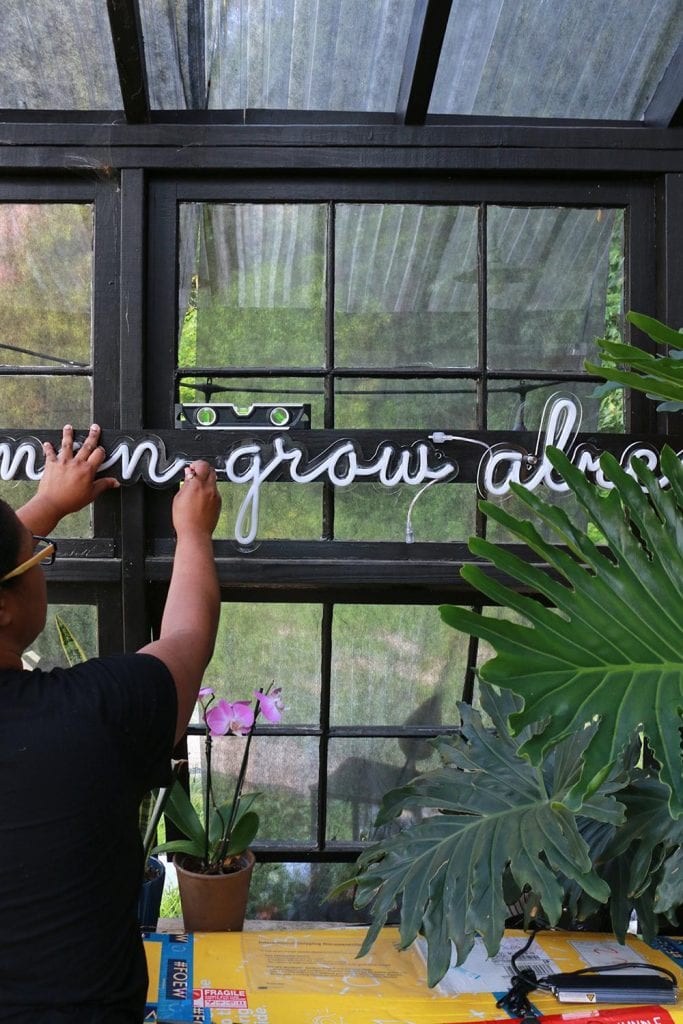
First comes the design, then comes the pattern and layout, which detail exactly where and how the neon tubing will be placed.
Neon tubing is arranged by bending and shaping it to fit the pattern, and then a gas torch is used to blow and shape it into the desired shape.
Before the neon gas is introduced, the electrodes and wiring must be installed and the air removed using a vacuum pump.
The assembly and mounting are completed before the gas is injected.
Prior to being dispatched or installed, the sign undergoes rigorous testing and quality control to ensure it is fully functional and meets all applicable safety and quality standards. Since the early 1900s, neon signs have been widely used; creating a one-of-a-kind design for one requires technical skill, artistic taste, and careful attention to detail.
Two of the most famous neon signs in the world are the "Welcome to Fabulous Las Vegas" and the "Coca-Cola" signs. In 1977, Milton Glaser created the "I NY" sign, which has since been printed on everything from t-shirts to coffee mugs as a universal symbol of New York.
As a result of its adaptability, the "I ❤ NY" sign has quickly become a modern classic. It's been reworked to represent a wide variety of locations, and is especially popular among the younger members of Generation Z. The "Vibes" sign is a popular piece of home decor because it is inexpensive and adds a lot of character to any space.
Nightclubs and bars also use neon signs, such as the "cocktail glass" sign, which is a stylised picture of a martini or other traditional cocktail glass.
The cocktail glass sign, often accompanied by arrows, stars, or inscriptions in neon, has come to symbolise the festive nature of bar and club culture. Easily paired with other neon elements, such as "Sale," "Clearance," or "New Arrivals," it is one of the most recognisable storefront signs in the world. This adaptable design can be used in a variety of storefronts with different logos.
For decades, businesses have turned to custom neon sign design as a way to stand out from the competition and attract new customers. Today, gamers and streamers are increasingly using custom neon signs as a way to brand their setup and set the mood for their viewers.
One of the most recognisable logos, the "Gamer" emblem represents a sense of community and shared interests among the media's target demographic.
As a powerful symbol of the gaming and streaming communities and the importance of self-promotion, it demonstrates that custom neon sign design is a common means of creating a distinct brand identity.
Content Summary
- Neon signs have been used for marketing and decoration for well over a century, and their vivid hues and attention-grabbing patterns continue to captivate people everywhere.
- Many well-known custom neon sign designs have emerged over the years, attesting to the adaptability and originality of this fascinating art form.
- In this blog, we will examine the background and cultural impact of several well-known custom neon sign designs.
- Creating unique neon displays has a long and storied history that can be traced back to the early 20th century.
- However, personalised neon sign design has survived this decrease.
- Artists and businesses alike have been turning to neon to produce one-of-a-kind and eye-catching designs in recent years.
- Many contemporary neon sign artists have embraced new methods of production, such as the use of digital design software and LED lighting to make more eco-friendly versions of the traditional signs.
- The art of creating unique neon signs is still widely used in the world of marketing and interior design today.
- The history and legacy of these works, which range from vintage neon signs to cutting-edge designs, speak to the everlasting allure of this distinct art form.
- Creating a unique neon sign is an art form that calls for technical skill, precision, and attention to detail.
- Making a design is the first stage in making a neon sign.
- Glass is blown and formed with a gas torch to create the neon tubing.
- Next, the ends of the neon tubing are fitted with electrodes and linked to the sign's electrical system.
- After the gas is pumped through the neon tube, the sign may be finished being put together and installed.
- Connecting the cabling and transformers required to power the sign, as well as attaching the tubing to a backing material or frame, may be part of this process.
- It takes technical know-how, aesthetic sensibility, and meticulous attention to detail to make a unique neon sign.
- The "Welcome to Fabulous Las Vegas" sign, a landmark in the city since 1959, and the "Coca-Cola" sign, which has been used in innumerable advertising and has become synonymous with the brand, are two of the most recognisable neon signs in the world.
- The "Moulin Rouge" sign in Paris, the "Apollo" sign in New York, and the "Ryman Auditorium" sign in Nashville are all examples of well-known neon signs.
- I ❤ NY There have been numerous innovative and creative designs for custom neon signs in recent decades, but the "I ❤ NY" sign stands out as one of the most famous and widely recognised.
- Many different iterations of the "I ❤ NY" sign, some using LED lights instead of the original red and white neon, have been made throughout the years.
- Even more firmly establishing its reputation as a modern classic, the design has been altered to symbolise numerous cities and locales.
- Among the various bespoke neon sign designs that have become popular among members of Generation Z, the "Vibes" sign stands out as one of the most iconic and recognisable.
- The "Vibes" sign has become a significant emblem of the design aesthetic and values of Generation Z, even if it may not have the same cultural significance as some of the iconic neon signs of prior eras.
- The cocktail glass symbol's widespread acceptance can be explained by the celebratory nature of bar and club culture.
- To create a more unified and eye-catching visual display, the sign is typically combined with additional neon features like arrows, stars, or inscriptions like "Happy Hour" or "Cheers."
- The cocktail glass sign has become a symbol of the exciting and dynamic nightlife environment, even though it lacks the historical value of some of the more famous neon signs from bygone eras.
- Retail stores and shopping centres frequently use custom neon signs to attract customers' attention and inject some character and identity into their storefronts.
- The word "Open" is usually shown in big, bold letters on the "Open" sign, a classic neon style.
- Custom neon sign design has been used for decades to establish a company's identity and attract new clients, and this trend shows no signs of slowing down. "
- The addition of a custom neon sign to a gamer's or streamer's setup is a common way to give their setup a more recognisable identity and establish the mood for their viewers.
- An arrow or border may be added to the sign to emphasise its message and complement the streamer's visual identity.
- Its success proves that custom neon sign design is a popular method of developing a memorable company identification, even in the modern era.
FAQs About Neon Lights and Signs
While the average lifespan of a neon sign is eight to fifteen years, many of them last much longer than that. A sign's lifespan can be shortened by leaving it on for extended periods of time, and it also increases the risk of overheating and electrical surge damage
Neon signs, which were common from the 1920s to the 1960s and again in the 1980s, require them to create the bright, eye-catching displays of colour that are their hallmark.
The neon glass tubes in the metal conduits are linked together by high-voltage electrical wires. When temperatures get too high, the wires powering the sign can melt, rendering it useless in whole or in part.
Believe it or not, no electricity is required here, despite the fact that many people think they must plug it in. When excited by either electricity or ultraviolet light, gas molecules release electrons, causing the gas to glow.
Neon signs are stunning to behold, but they pose a danger if they aren't regularly serviced. Injury from shattered glass, electric shock, or a fire hazard are all examples of the dangers that could arise.

